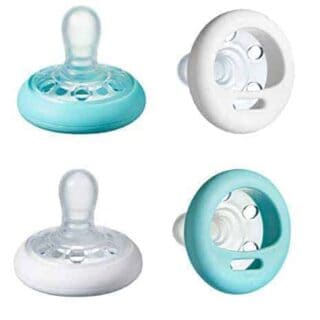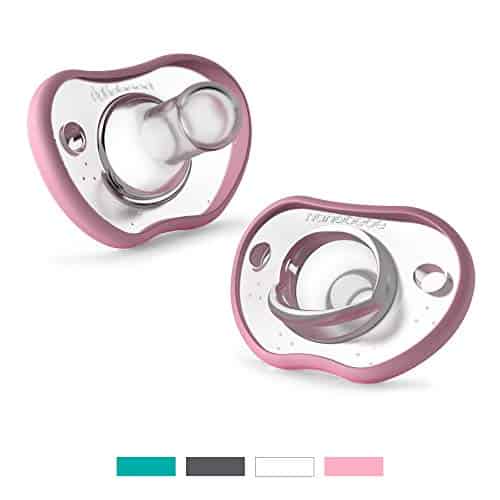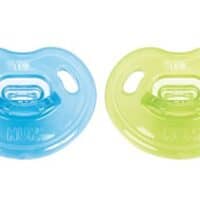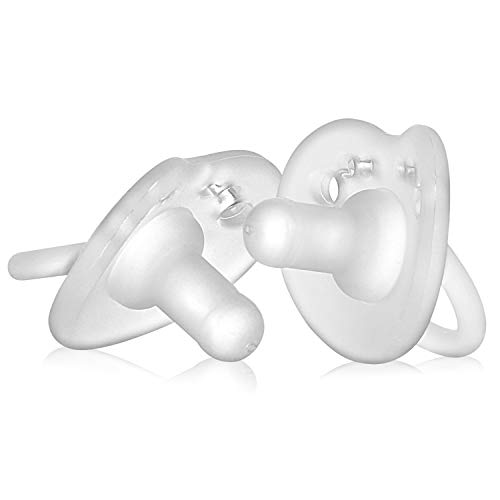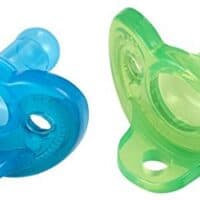Are you looking for the best pacifier for your breastfed baby? You have found the right page! In this article, we will thoroughly discuss everything you need to know about giving your baby a pacifier so you can make the best choice.
It can’t be denied that there is a lot of controversy surrounding the use of pacifiers in babies, especially those that are exclusively breastfed, some say that it will destroy the nursing pattern/feeding schedule of the baby.
Before making any assumptions about the topic, you should do your research so you can come up with a sound and informed decision on what’s best for you and your baby.
What Should I Know Before Giving My Breastfed Baby a Pacifier?
To help you decide whether you should give your breastfed baby a pacifier, here are answers to some frequently asked questions regarding the use of pacifiers in breastfed babies.
Related: 9 best non-toxic teething remedies to Soothe Your Baby
Are Pacifiers Good or Bad for Breastfed Babies?
There is no definitive answer to this since each baby is unique, and they have different needs as well as temperament. This will also depend on how and when the pacifier is being offered to the baby.
To help you come up with the best decision, let’s lay the pros and the cons down so you can have a better picture.
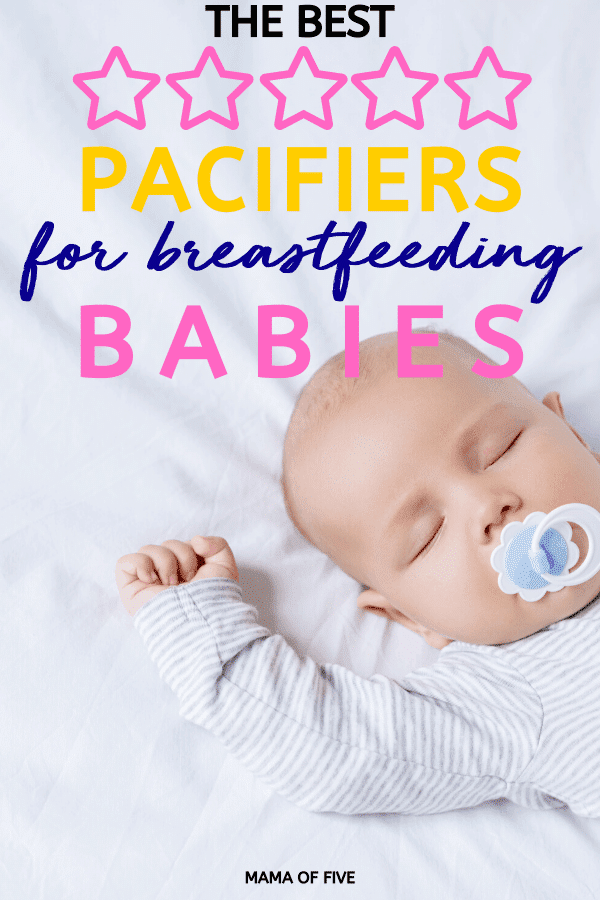
As an Amazon Associate I earn from qualifying purchases. The links below may be affiliate links. Please read my disclosure policy for more information.
What are the advantages of using a pacifier?
• It helps soothe the baby. Sucking is a baby’s natural need, and when it is not met, you’ll end up with a fussy newborn. Pacifiers help the baby meet that need so they will feel more secure, calmer, and helps them sleep better too.
• The use of pacifier during naptime or bedtime dramatically lowers the risk of SIDS as per American Academy of Pediatrics.
• Easier to wean compared to thumb sucking. Since you are in control of the pacifier, it will be relatively easy to wean the baby off it when you feel it’s the right time. Remember, if the baby discovers thumb sucking, you have very little control over the baby’s thumb.
• Pacifiers can considerably help babies during plane rides as it helps lessen the pressure in the ears.
Related: Best Baby bottles for reflux 2020
What are the disadvantages of using a binky or pacifier?
• The possibility of teeth problems. Prolonged use of pacifiers may cause your baby’s front teeth to slant or protrude
• If introduced too early, pacifiers can cause nipple confusion because the breast’s shape and texture are different from that of a pacifier. When nipple confusion occurs, your baby will have a hard time latching on to your breast.
• Some studies show that pacifiers increase the likelihood of ear infections especially if weaned late.
Quick Comparison: Mama of Fives Top Picks 2020
Related: 5 Tips for a cleaning space saver high chair
When can Breastfed Babies Have Pacifier?
Wait until your milk supply is stable, and the baby has established a good breastfeeding pattern. This should be around three to four weeks after birth.
How to Introduce a Pacifier to a Breastfed Baby the Right Way?
First thing’s first, make sure that the pacifier is clean and sterilized before offering it to the baby. Ideally, it should be offered after feeding, and when you know that the baby isn’t hungry.
Just slowly introduce it by putting it in the child’s mouth. Remember never to force the baby to take the binky if he or she refuses. When this happens, you can try again after a while.
As soon as the baby learns how to use the pacifier, it should then be offered only during nap or bedtime or if you notice that the baby is stressed (but not hungry).
Related: Best Bassinet for Breastfeeding
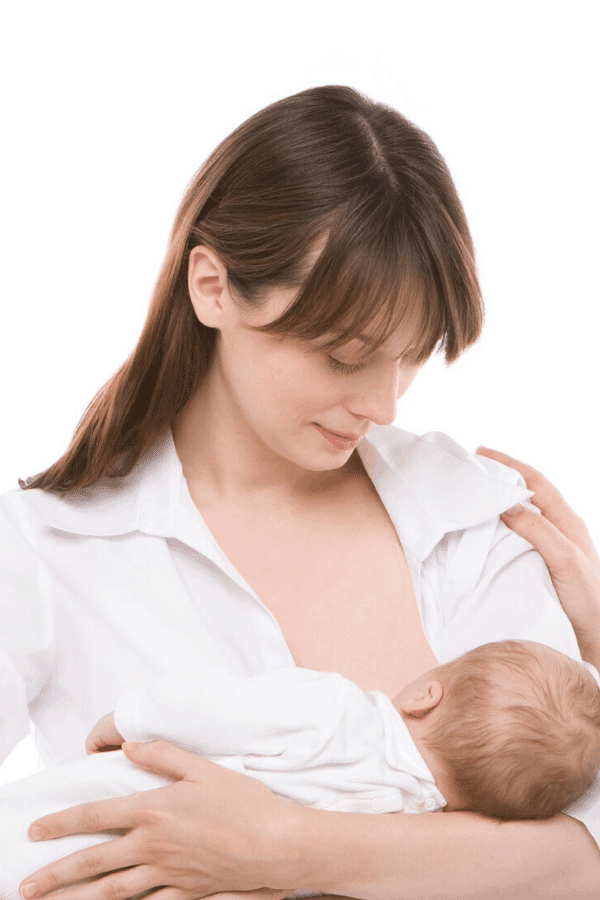
What to do if my Breastfed Baby Won’t Take a Pacifier?
• Let’s say you’ve tried everything, but the baby refuses to take a pacifier, here are some of the things that you can try.
• Just try again later, maybe the baby is not in the mood yet
• Try a different pacifier
• Try a different shape
• Try warming it up a bit with hot water or place it in the fridge before giving it to the baby
• Give it when the baby is sleepy to take advantage of the sucking reflex that’s normal in sleeping babies
• Place it in the baby’s mouth then distract the baby from pushing it out by stroking the nose
• If all else fails, try this trick. Gently put the pacifier in the baby’s mouth, and as soon as the baby tries to suck on it, slowly take it out.
Do this a few times and see if your baby will try to suck harder to prevent you from taking it away This is what we call baiting and most of the time, this trick works
Related: Hands Down The Best Online Breastfeeding Class Ever
What are the Best Pacifiers for Exclusively Breastfed Babies?
Pacifiers come in many shapes and sizes that choosing one for your baby can be hard, especially for first-time moms. You’ll find hundreds of pacifiers in the market, but below are highly recommended and considered as the best pacifiers for breastfed babies.
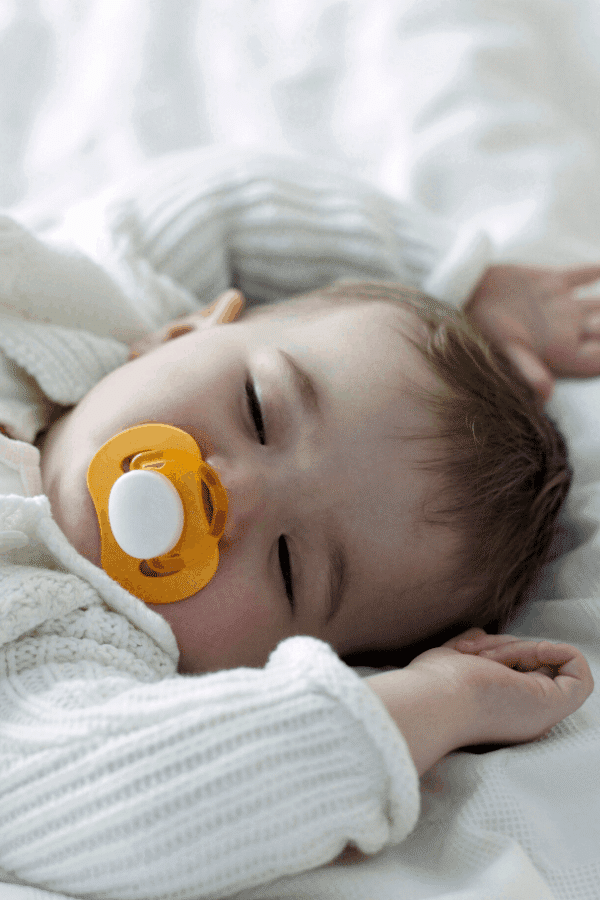
Tommee Tippee Closer to Nature Soother – Why it’s great? It is made from super-soft silicone and shaped like a breast, making it easy for the baby to transition from breasts to the pacifier.
It is also BPA-free, orthodontic, and designed for better airflow.
Nanobebe Pacifier – The perfect fit design helps keep your baby latch securely, and at the same time, it helps avoid nipple confusion.
The Nanobebe Pacifier comes in one-piece, making it safe from choking hazards.
NUK Newborn Silicone – Approved by the American Academy of Pediatrics, the NUK Newborn comes in asymmetrical shape to help promote baby’s healthy oral development. The heart-shaped field fits perfectly under the nose for easy breathing.
Evenflo Feeding Balance Pacifier – Specially designed for natural tongue position, the Evenflo Feeding Balance Pacifier mimics the baby’s tongue shape during breastfeeding making it great for breastfed babies.
It is made from soft materials to avoid mouth fatigue and promote strong sucking skills.
The First Years GumDrop Newborn Pacifier – Designed to contour to the baby’s face, the First Years GumDrop Newborn Pacifier is designed with the baby’s comfort in mind, which is why it is highly trusted by hospitals nationwide.
When used, it rests comfortably on your baby’s face when he or she is asleep, so it stays in place. How many pacifiers does my breastfed baby need?
Related: Is my baby getting enough Breast Milk?
How Many Pacifiers Will my Baby Need?
You might be wondering how many pacifiers you need to buy for your baby. Not a lot, this one I’m sure of.
One pacifier will do as long as you clean it immediately after every use, so it’s ready for when the baby will need it again. However, you will need to change to a bigger pacifier every month or so as your baby grows.
Binkies are sold in different sizes according to the baby’s age, so check the packaging.
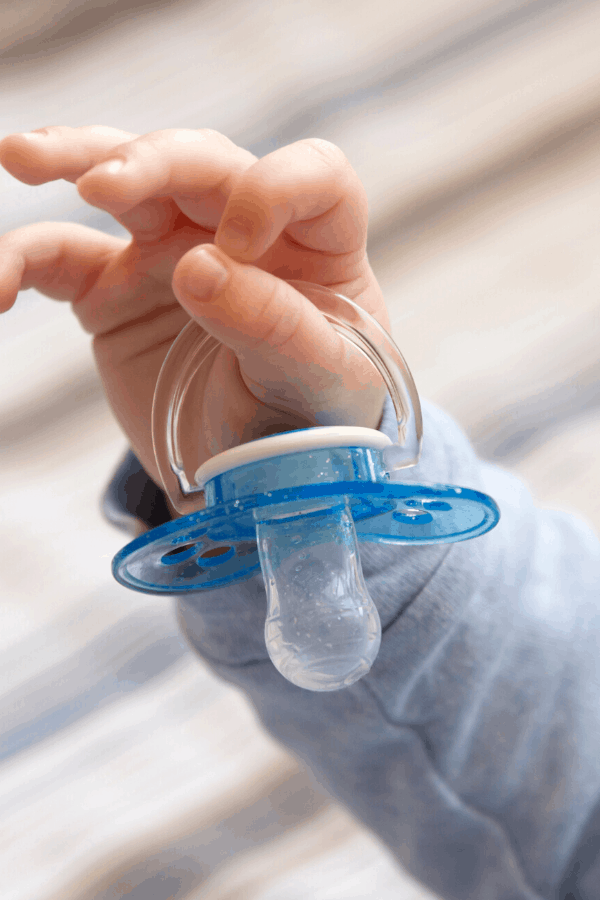
How to properly wash a pacifier?
You do not want the pacifier to become a breeding ground for disease-causing bacteria, so you must regularly sterilize and wash the baby’s binky.
Cleaning a pacifier is easy. You need to wash it with soap and hot water after every use. You can sterilize it by boiling the pacifier in water for about 5 minutes.
Remember that cleaning your baby’s pacifier with your own mouth is not considered hygienic.
Related: My Success on the Keto diet while Breastfeeding
When to Replace a Pacifier?
Aside from keeping the pacifier clean, you also need to check it for wear and tear regularly.
Ideally, it should be done before and after every use, especially when the baby is teething.
For hygienic purposes, pacifiers should be changed every two months, but immediately replaced at the first sign of damage.
When to Wean, my Breastfed Baby from the Pacifier?
According to The American Academy of Pediatrics, weaning off the pacifier should be done when the baby is around six months to avoid ear infections.
This is also the most relaxed time to do it without getting that much fuss from your baby. Just reduce binky use gradually until the baby gets used to self-soothing without it.
Related: Super Foods for your boobs: FOODS THAT WILL INCREASE BREAST MILK SUPPLY!

However, weaning from the pacifier depends on the child. Some babies don’t seem to mind not having it, while some may not be ready to let go at this age just yet.
Don’t rush your baby if he or she is not yet prepared, but do keep in mind, that the later you put this off, the higher the risk of your baby developing a cross-bite and ear infection.
Ideally, your child should be off any pacifiers by two years of age. Otherwise, it can significantly affect the child’s teeth formation.
Related: Easy Hacks And Natural Remedies To Soothe A Crying Baby
In closing, the use of pacifiers on breastfed babies provides a lot of benefits to both mother and child. Aside from teaching the baby how to self soothe and control their feelings, it lowers the risks of SIDS.
Pacifiers can also provide great relief to an exhausted mom in between cluster feedings. You’ll never know the struggle unless you experience it yourself.
A pacifier will give the mom a chance to breathe and rest during these times. A quick and final reminder though, pacifiers should never be used as a replacement for a feeding. I hope this helps!

